Knowing how deep to plant potatoes poses a dilemma for many farmers since numerous sources give contradicting information. You should note that factors like soil temperature affect how you grow potatoes, and that’s why there are varying data on different platforms.
Keep reading and we will review potato gardening, including an in-depth analysis of things to consider before and after planting seed potatoes. Most importantly, you’ll discover the dynamics involved when deciding the ideal planting depth. Let’s get started!
Contents
Why You Should Know How Deep to Plant Potatoes
Potato farming might seem simple, and many might ignore the required planting depths. The potato type will determine the planting techniques and depths to use. Some of the common varieties include:
- Waxy potatoes,
- Russets,
- Fingerling.
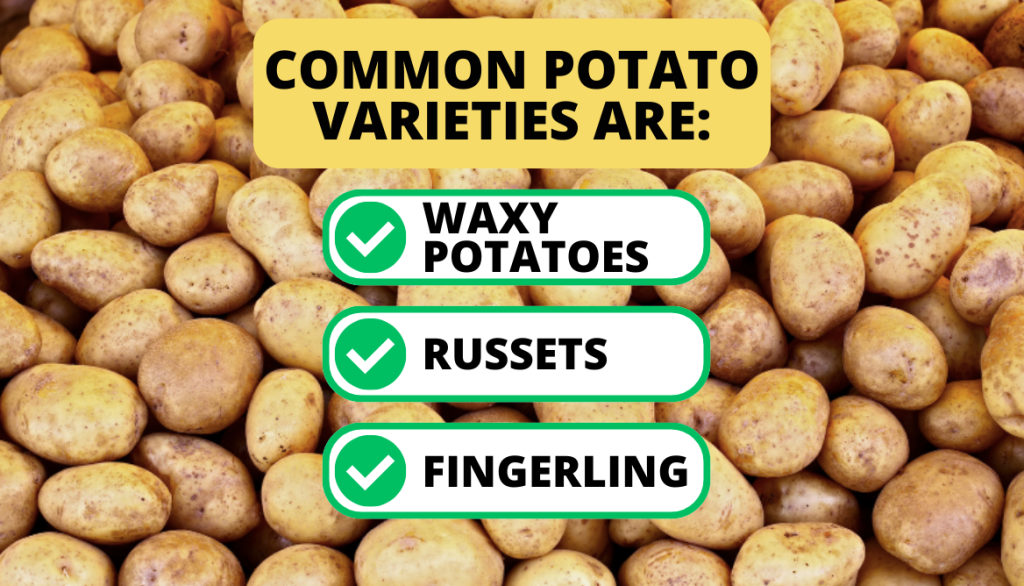
The correct depth results in good growth. Here are things you should know:
- Spacing: The seed spacing used as different methods have varying measuring dynamics.
- Soil type: It offers nutrients and access to sunlight at different levels.
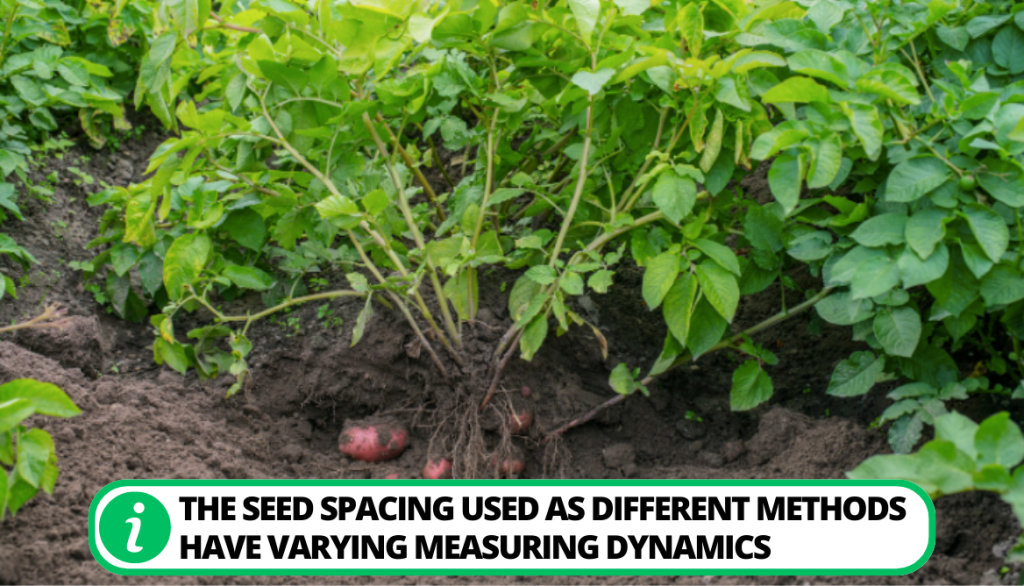
The benefits of understanding planting depths include the following:
- Your plants get optimal root development.
- The risk of sunlight is minimized.
- It influences tuber formation and growth.
- It is convenient when you hill and or harvest potatoes.
3 Depth Options Potatoes
There are three strategies you can use to grow potatoes properly.
1: Planting Seed Potatoes Using 4 to 5 Inches
The standard hole depth for early-season potatoes is 4-5″, which goes in hand with the 10-12″ spacing. Generally, these measures provide sufficient soil coverage and protect your potato plants from the following:
- Excess soil temperatures.
- Moisture fluctuations.
- Cover against pests.
- Extreme sunlight can lead to tuber burns.
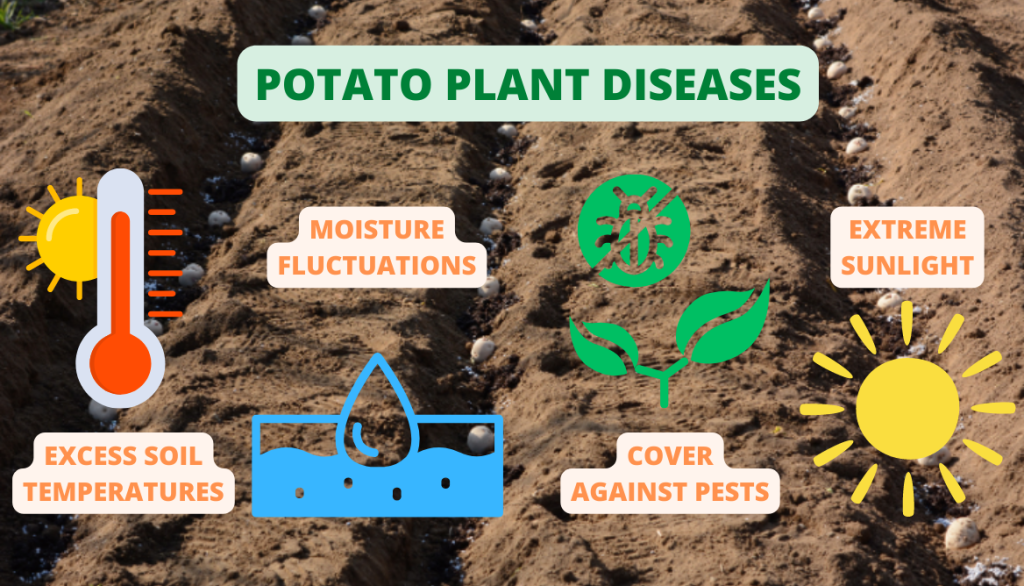
Additionally, 4″-6″ promotes healthy root systems, thus able to support strong growth. This type of development is essential in ensuring the covered seedling can easily access oxygen and other nutrients.
2: Growing potatoes with Straw Mulch Planting
The straw mulch method is a great way to reduce your workload. It involves simple dynamics that include the following:
- Preparing shallow beds on the spread-out soil surface or raised grounds.
- Adding elements such as compost or fertilizer.
- Planting will entail gently placing the potatoes into the soil and spacing the tubers accordingly.
- Proceed to cover the baby potatoes with straws, preferably eight inches.
- Give the plants 4 to 6 weeks of growth before adding more straws.
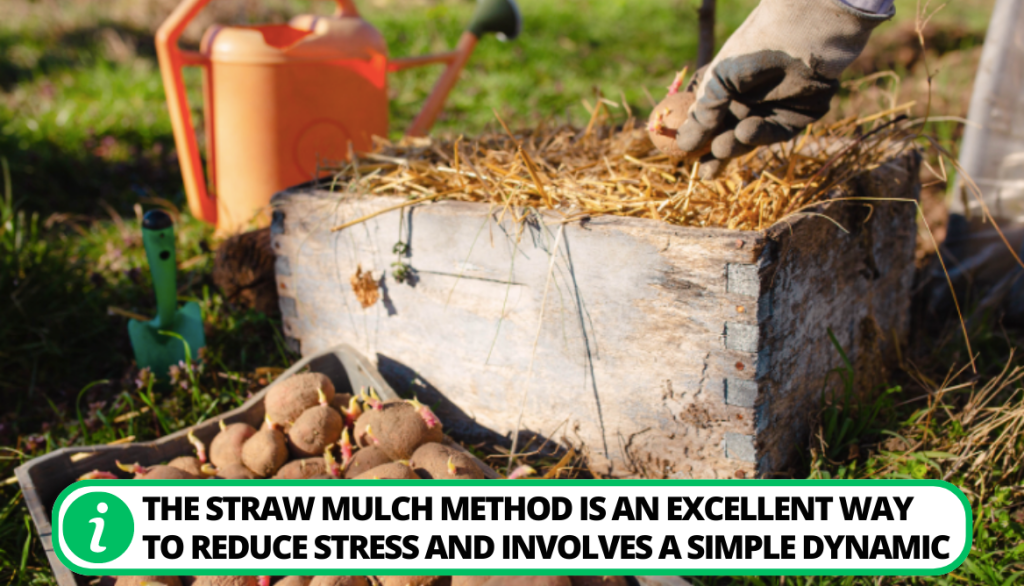
Planting potatoes with this method has the following advantages:
- Impacts moisture retention: The straw barrier layer reduces evaporation and moistens the soil.
- Discourages weed growth: Straws block sunlight from supplementing weed seeds, thus preventing them from sharing nutrients and germinating with the potato vines.
- Better Soil Composition and Health: After decomposition, the mulch adds essential nutrients, facilitating a healthy soil ecosystem. This includes attracting earthworms and other microorganisms.
3: Deep Planting Potato Plants
This mechanism is uncommon, even in places with loose and well-drained soil. You’ll need a garden hoe to dig up to 8 or 9 inches for your seed potatoes. However, the plant and raw spacing should follow the standard measurements.
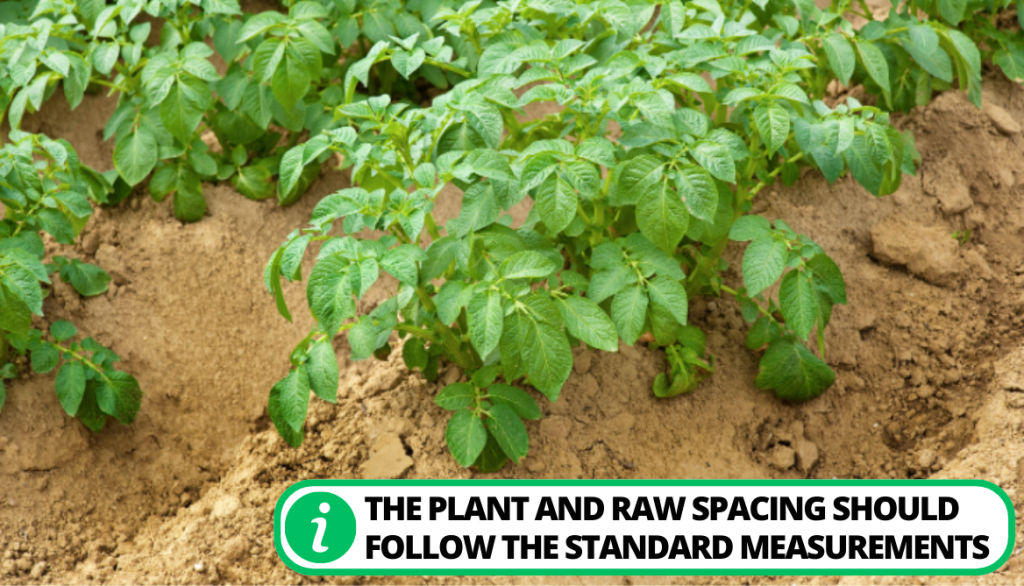
This farming method comes with various benefits that include the following:
- There’s no need to hill your seed potatoes during the growing period.
- No mulching is required.
- You’ll use less effort and time working on the garden.
Unfortunately, this mode has numerous disadvantages, such as:
- The plant’s shoot takes longer to emerge, usually around 4 to 5 weeks.
- It is tedious to extract the tubers at the time of harvesting.
- Deep planting can be tricky on clay soil, which is sensitive to various weather conditions, causing your seed to rot.
Therefore, ensure you plant potatoes in the right weather and soil variety for a great yield.
What are the Methods of Deep Planting?
Seed potato farming mainly utilizes rows, though advancement in agriculture introduces you to more modes. Read below to understand the various methods when deciding how deep to plant potatoes.
1. Using Rows for Seed Potato Planting
Using rows is a convenient way to plant potatoes, though it does come with several challenges before the sprouts emerge or harvest the yield.
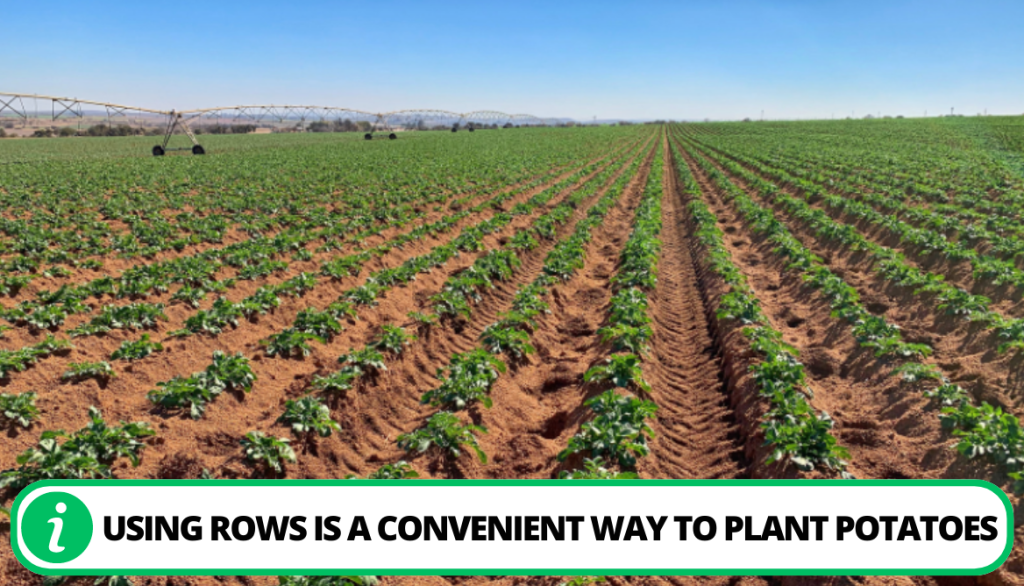
What You Need to Do
Here is a brief review of the steps to follow in rows farming:
- Use a garden hoe to dig up 4 to 5 inches and utilize the 12″ spaces between your seed potatoes. This stage will also involve adding compost or organic components to improve soil fertility.
- Place your potato plant in the holes (can also get to 6 inches), then cover using the extracted soil. You should plant quality varieties, preferably from garden centers.
Common Issues With Rows
Like any other farming method, you’ll encounter challenges when you plant potatoes in rows, such as:
- The seed potatoes are exposed to diseases like late blight, despite the mode having the perfect aeration.
- You’ll have to do extra work as the potato plant grows, including mulching to improve the tuber development.
- Also, weeds can be persistent, which may mean repeated tedious gardening activities.
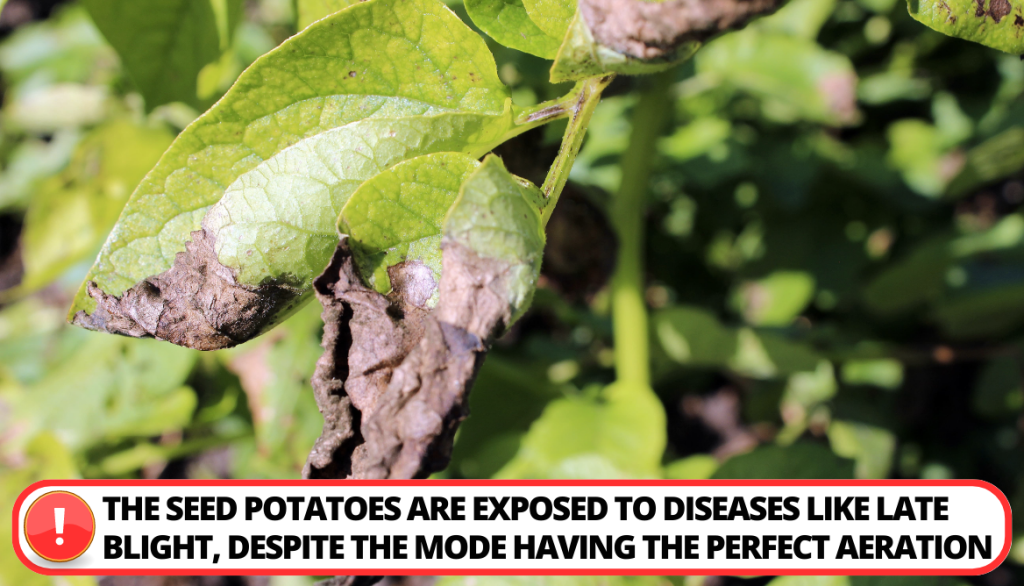
2. Trenches Gardening Method for Seed Potatoes
Trenching is effective, especially when deciding how deep to plant potatoes. This involves digging deep furrows, which offers several benefits, such as:
- Maximizing space utilization.
- Improving drainage.
- Offering a conducive environment for potato growth.
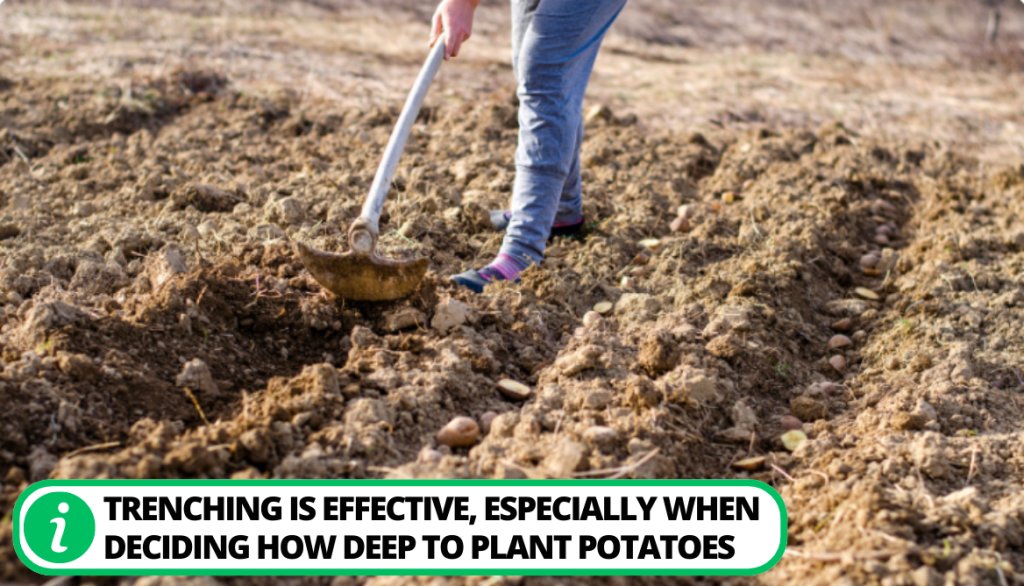
So, what do you need to do, or are there any implications of trenching? Below are the guidelines for trenching when planting potatoes.
What You Need To Do
Here are the steps to follow when planting seed potatoes through trenching:
- Get a good areawith excellent weather, good drainage, and, most importantly, nutrient-rich soil. Avoid areas prone to waterlogging or where potatoes have grown in recent years to minimize the risk of diseases.
- Start digging the 12-inch deep trenches.
- Place the seed potato in the spaces and add 4″ of soil.
- Continue adding more soil mixture as the plant grows. This will improve tuber formation and prevents it to turn green or getting exposed to burning sun rays.
Deep Trenches Common Problems
Here are issues associated with deep trenches:
- There’s water logging in the holes during heavy rain seasons.
- A collapsing trench can easily damage small potatoes.
- Diseases such as potato blight are common if you don’t regularly tend to your garden.
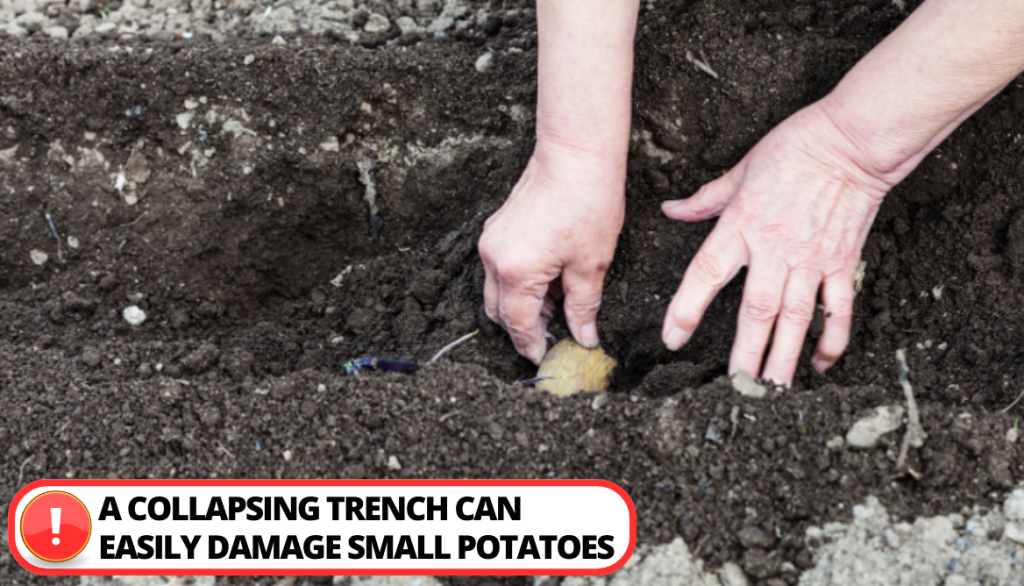
3. Raised Beds Utilization
Raised bed systems are common in modern farming setups, and you can also use them effectively to grow potatoes. This style is pretty straightforward, and here is what you need to know.
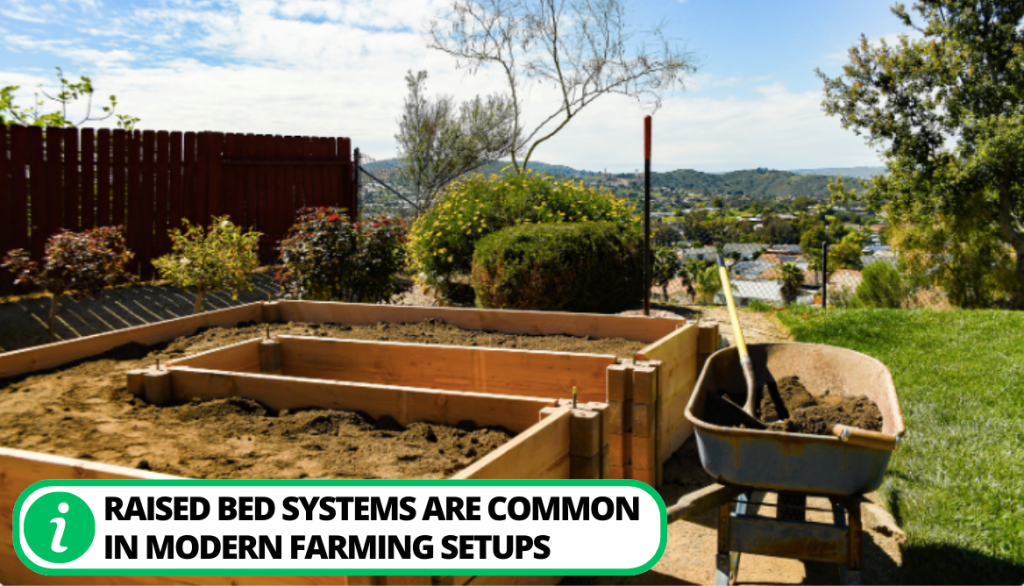
What You Need to Do
To garden using raised beds, you need to ensure:
- The location of your garden is optimal for potato plants to receive direct sunlight for at least 8 hours per day.
- Construct the raised beds using bricks or wood, and aim for a depth of 8-12 inches for great potato tubers development.
- For easy access when planting, watering, and harvesting, you can also use pre-made containers with a manageable width of around 3-4 feet.
- Prep your soil by incorporating manure or a combination of organic substances.
- Put your seed potatoes at a depth of 4-6″ and 12″ distancing.
- Mulch and hill the plants by applying a layer of organic straw or shredded leaves around the base of the plants.
Common Issues
Here are the issues associated with the potato planting technique.
- The soil depth might need to be increased for efficient root development.
- Your plants can also be crowded, thus competing for the available nutrients.
- There can be poor drainage in case the soil gets compact. Therefore ensure it is loose to support your potato growth.
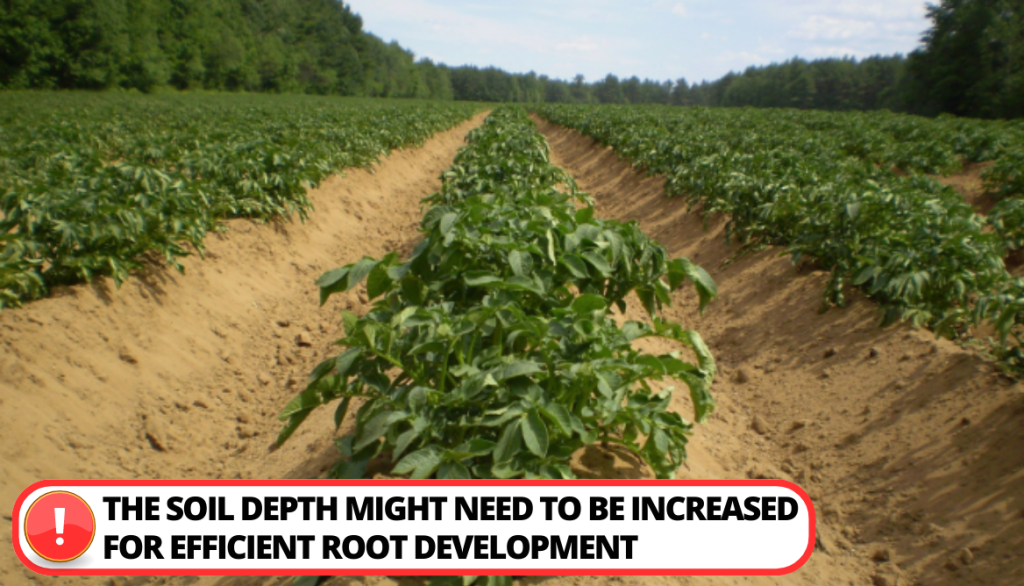
4. Using Containers
Containers are excellent due to flexibility. They are a great farming method, housing single-plant varieties. The factor allows you to monitor an affected seed potato closely. Additionally, you can backfill the planting medium as your potato plants grow and easily empty it during harvest.
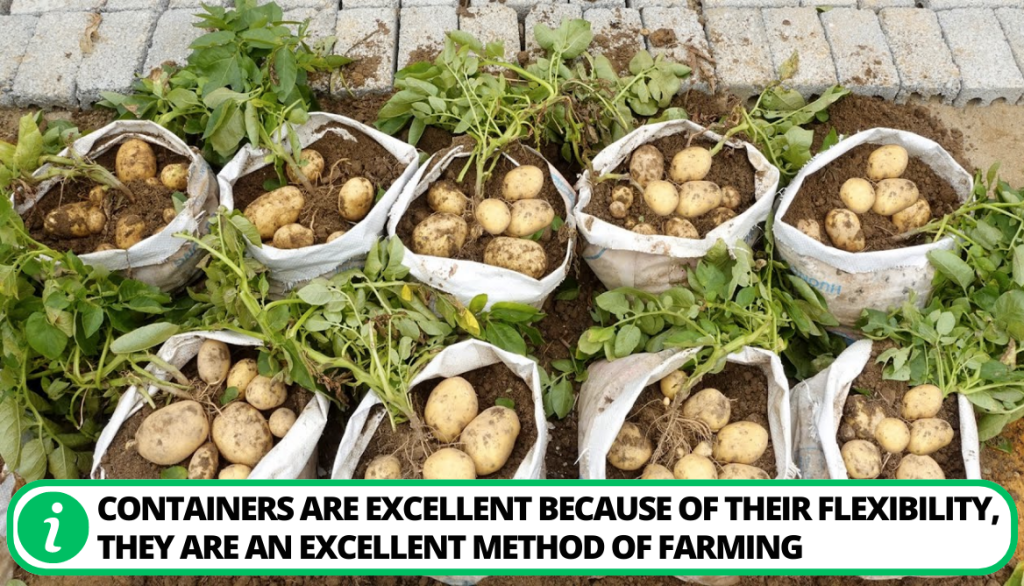
What You Need to Do
You can use different container types like:
- Trash bags,
- Bigger buckets,
- Compost bags.
The 4 to 6 inches depth is applicable for all the above mediums. Here is a simple process that you can follow:
- Load the vessel’s bottom third with soil or compost.
- Set 2-3 potatoes on the soil surface and ensure they are well-spaced.
- Cover your rooted plants with 4″ of soil.
- Consistently water the mini gardens to maintain their moist state.
Container Method Process
This modern method comes with issues such as:
- Plants can rot quickly, as this equipment lacks good soil aeration.
- It is easy to get nutrient imbalance if you mix soil, fertilizers, and organic matter wrongly.
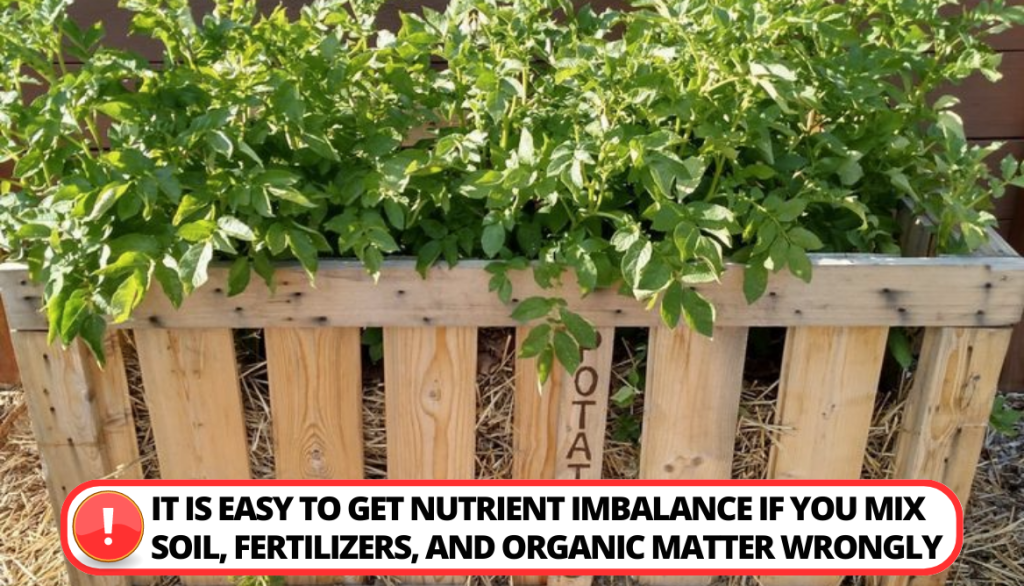
5. Planting Potatoes in A Hydroponic System
This is a popular and modern gardening activity, getting praise from many indoor farmers for its dynamics and productivity. The method utilizes a nutrient-rich water solution and includes the necessary elements for their growth. It usually comes in two forms, namely:
- Deep water system: They are typically filled with running water, and plants are suspended in the pots.
- Flood and Drain: This involves filling the root zone with water for at least 15 minutes, followed by 45 minutes draining it back into a holding tank.
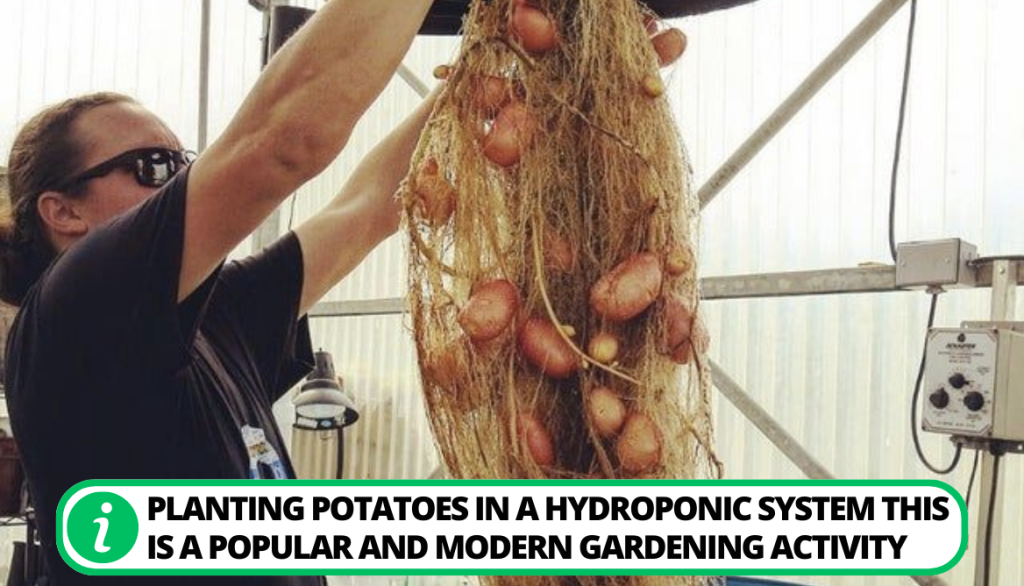
What You Need When Using a Hydroponic System
Here is what you should use when opting for this method:
- The right planting components. For instance: vermiculite, perlite, and peat for optimal harvest.
- Ensure the bins are dark and include a cover to fully block the sun.
That said, follow the procedure below to plant potatoes.
- Select your preferred medium and fill it with a planting solution, only leaving 2 inches at its top.
- Give the component at least three weeks to cycle (for ample nutrient build-up) before planting.
- A 1 or 2-inch depth will be ideal.
- Sealing the mediums is vital as your growing potatoes are sensitive to direct sunlight.
Common Issues
Continue reading to learn about the negative effects of planting potatoes using a hydroponic system:
- Most farmers find the process complicated, where messing up steps means repeating the whole process.
- The potato production barely matches the soil output, especially regarding the size.
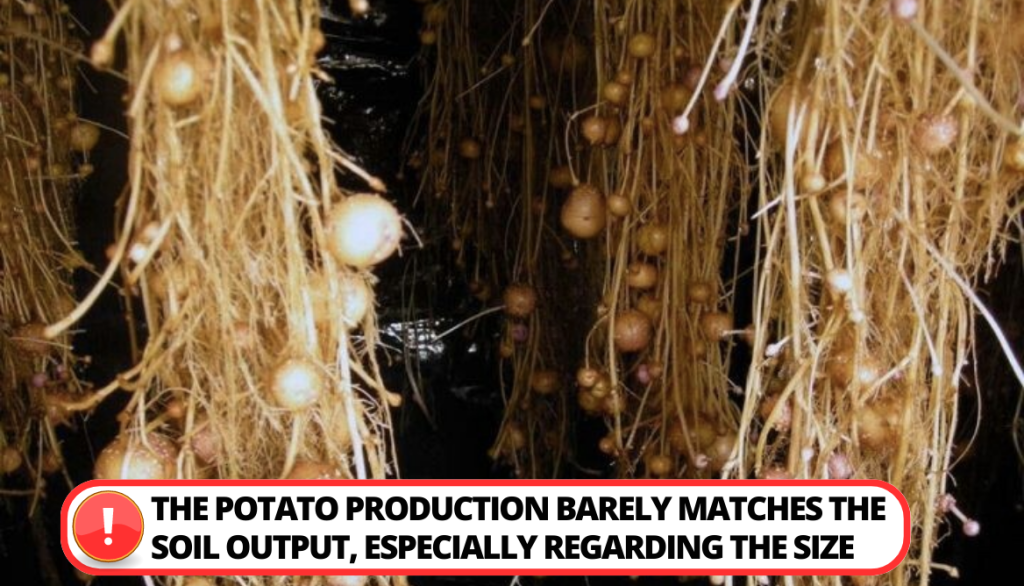
Potato Planting Tips for Better Yields
There are more ways to influence your output besides how deep to plant potatoes. Consider the following suggestions for a better harvest.
1. Choose the Legit and Healthy Seed Potatoes
Various garden outlets near you most likely have disease-free varieties, but avoid grocery-store potatoes. The latter are usually treated with chemical substances, which can inhibit their natural growth.
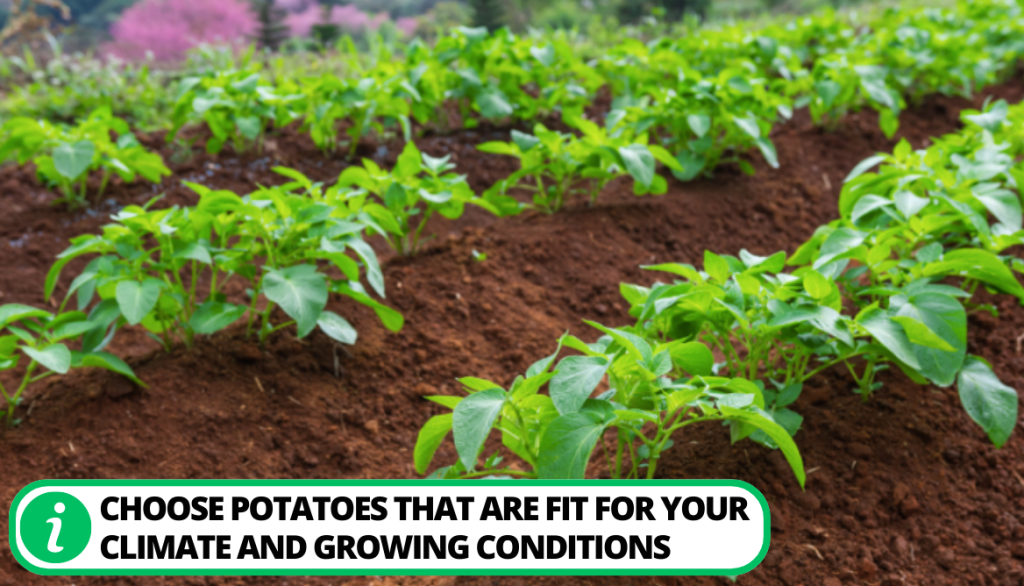
Also, choose potatoes that are fit for your climate and growing conditions. Some varieties are better suited for warmer temperatures, while others thrive in cooler regions.
2. Plant Potatoes at the Right Time
Potatoes are temperature sensitive and will tend to do well during mid to late spring, between 40 and 45 degrees Fahrenheit.
3. Select the Best Planting Location
Your plants will require access to nutrients and sunlight, which can be accomplished by adding fertilizer and monitoring the PH levels. The optimal range for potato cultivation is usually between 4.8 and 5.5.
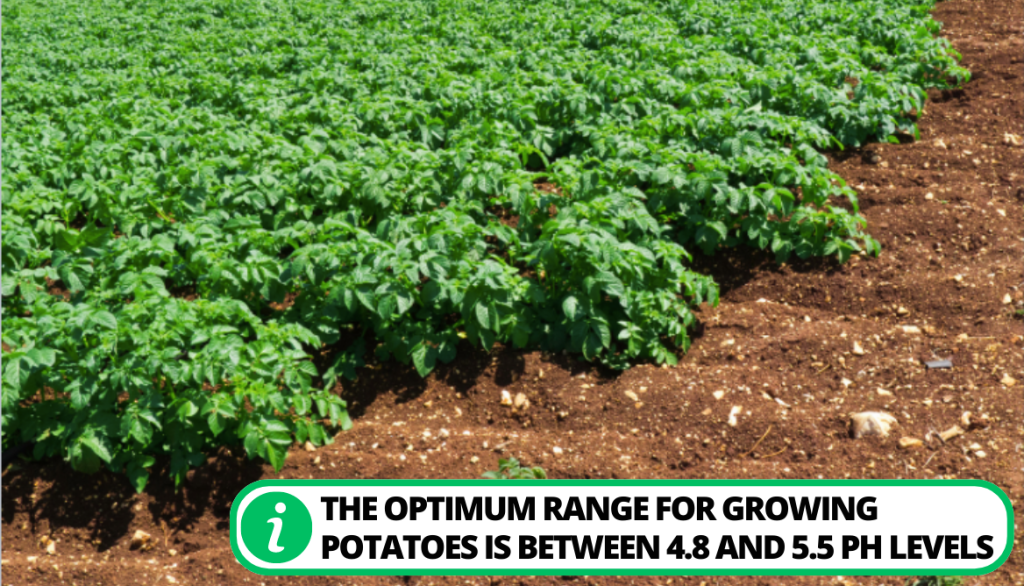
4. Prepare the Seed Potatoes
Here are some things to think about before you start.
- Cut the seeds into two and confirm the pieces have two eyes.
- You can still plant them whole if they are small.
- Divide them 2 to 3 days prior to planting.
5. Let the Seeds Face Up
It is important to let the tubers point upwards to allow the leaves stem and leaves to grow efficiently.
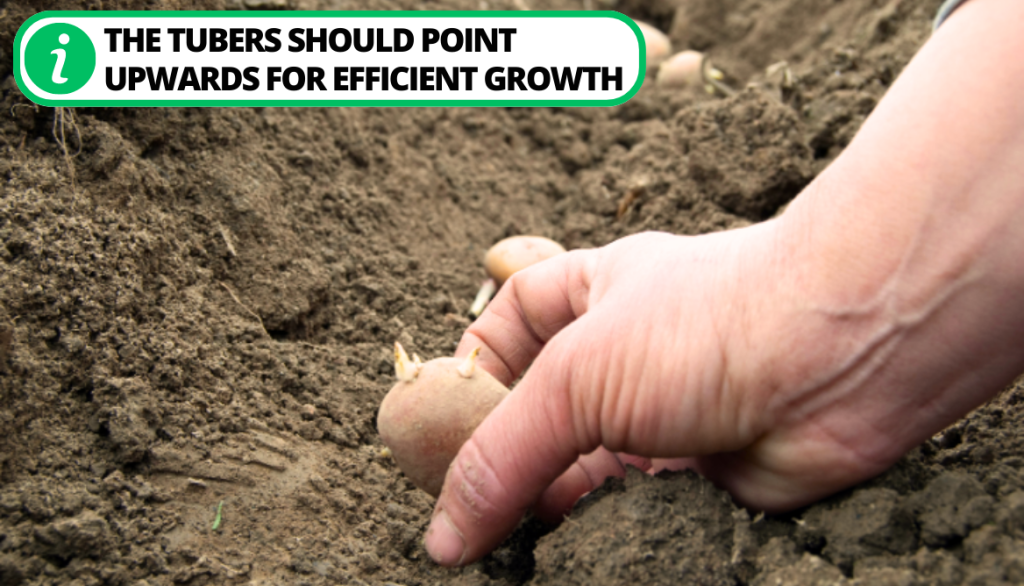
FAQ
What Not To Plant Next to Potatoes?
Potatoes should be planted close to vegetable roots such as tomatoes, onions, cucumbers, and carrots, especially in raised and hydroponic setups.
What Fertilizer Is Good for Potatoes?
Potatoes will do well if you use NPK fertilizer.
How Quickly Do Potatoes Grow?
Potatoes typically take 12 to 20 weeks to mature, depending on the variety sown.
What Is the Best Crop to Plant After Potatoes?
The best crop to try after you plant potatoes include carrots, beetroot, and turnip.
What Is the Planting Ratio of Potato?
The planting ratio appropriate for potatoes is 2 to 2.5 tons per hectare. This will, however, depend on the tuber sizes, where smaller sizes (28 to 35 mm) can range between 1.5 to 1.8 tons per hectare.
Conclusion
That’s all we had regarding planting potatoes, with options to use in gardening settings. Potato farming has challenges, such as poor soil aeration, excessive sunlight, weeds, and water logging being some of the major issues. You can cause these problems using wrong depths and spacing measurements.
It’s best to adhere to the 4-6″ rule while considering the type of seeds you’ll use, and note weather patterns. Remember to always test the pH of the soil before and during the growing season.
So, what method do you prefer for higher potato yields? Comment below with the answer and inform our readers of your solutions to any challenges.
- How to Get Potatoes to Sprout Eyes: Detailed Growing Guide with 3 Options - July 31, 2023
- Weight of a Medium Potato: Revealed in Detailed Guide - July 29, 2023
- Maris Piper Potatoes: 9 Substitutes You Should Know About - July 27, 2023
Hello! I’m Jessica Zander, a garden coach and consultant based in the Boston area (zone 6b), offering virtual consultations across the country and Canada.
I’ve been passionate about gardening since the early 1990s, and in 2022, I launched You Can Do It Gardening to empower individuals to feel more confident in their gardening endeavors.
Following a 30-year career in nonprofit finance and operations, I transitioned out of that field in mid-June of 2023 due to the growing demand for coaching services. Interestingly, my years of presenting financial statements to boards and finance committees proved to be valuable experience for teaching people about gardening! I enjoy sharing skills, providing guidance and suggestions, and collaborating efficiently with clients to make significant improvements to their outdoor spaces, both small and large. I also regularly teach at the Arlington Continuing Education and Cambridge Adult Education.
My approach is direct and practical, akin to Mary Poppins, but tailored to your garden. Clients find satisfaction in saving money and taking pride in their own gardening achievements.

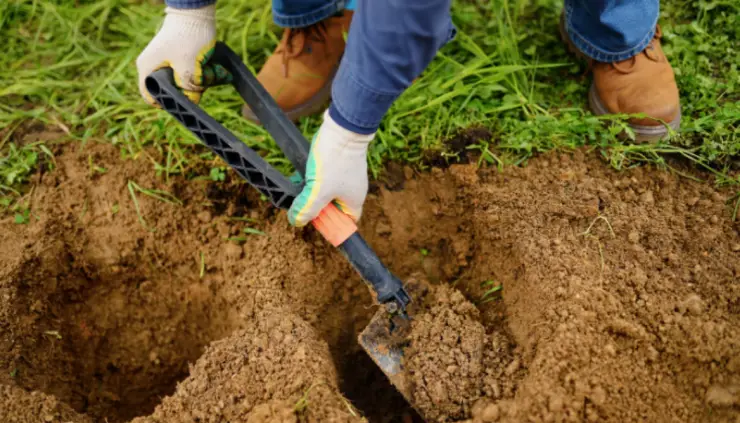
Add comment